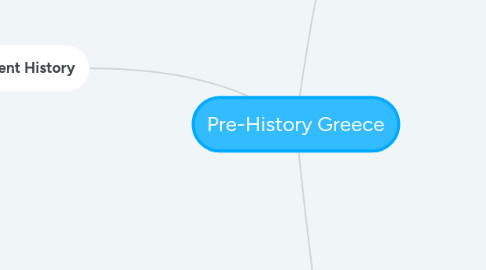
1. Ancient History
1.1. During the so-called “Greek Dark Ages” before the Archaic period, people lived scattered throughout Greece in small farming villages. As they grew larger, these villages began to evolve. Some built walls. Most built a marketplace (an agora) and a community meeting place. They developed governments and organized their citizens according to some sort of constitution or set of laws. They raised armies and collected taxes. And every one of these city-states (known as poleis) was said to be protected by a particular god or goddess, to whom the citizens of the polis owed a great deal of reverence, respect and sacrifice.
1.1.1. Though their citizens had in common what Herodotus called “the same stock and the same speech, our shared temples of the gods and religious rituals, our similar customs,” every Greek city-state was different. The largest, Sparta, controlled about 300 square miles of territory; the smallest had just a few hundred people. However, by the dawn of the Archaic period in the seventh century B.C., the city-states had developed a number of common characteristics. They all had economies that were based on agriculture, not trade: For this reason, land was every city-state’s most valuable resource. Also, most had overthrown their hereditary kings, or basileus, and were ruled by a small number of wealthy aristocrats.
1.1.1.1. These people monopolized political power. (For example, they refused to let ordinary people serve on councils or assemblies.) They also monopolized the best farmland, and some even claimed to be descended from the gods. Because “the poor with their wives and children were enslaved to the rich and had no political rights,” Aristotle said, “there was conflict between the nobles and the people for a long time.”
2. Metal Age
2.1. Copper
2.1.1. The Copper Age was a time of profound social and cultural change. It should be noted that not all societies started this process at the same time, or in the same way. Some never adopted metal at all. However, many of these changes first occurred around the eastern Mediterranean. The story begins around the end of the 5th millennium BCE. The climate, which had been great for agriculture, became drier, and many societies returned to hunter-gatherer lifestyles. With the domestication of animals that had occurred, many also resorted to pastoral ranching rather than crop farming. All of this brought people into fiercer competition for resources and encouraged experimentation with new materials for more efficient tools.
2.1.2. Two metals suddenly became attractive candidates. One was gold. Gold is pretty and easy to work with, but is extremely soft and isn't great for tools; so, people used it for jewelry. However, gold is often found alongside another mineral: copper. Copper is relatively easy to heat and work into various shapes, but is much stronger than gold once cooled. Ancient craftspeople had their new material.
2.2. Bronze
2.2.1. Bronze is a metal that is a mixture of a little tin and a lot of copper. It was invented in West Asia, where copper was smelted as early as 6000 BC, and during the 3000s BC experiments showed that adding tin to the copper made it harder: that is bronze.
2.2.2. Bronze came to Greece slowly around 3000 BC and did not make much difference right away. Those same Dimini people from the Neolithic continued living in Greece, but they slowly started to use a little bronze.
2.2.3. Bronze knives and swords were much easier to make and sharper than stone, bone or wood ones. At the same time, people in Greece started to use lead, silver, and gold as well.
2.3. Iron
2.3.1. The Greek Iron Age also referred to as the Greek Dark Age, is a period of time between the collapse of the Mycenaean civilization around 1100 BC and the beginning of the Greek Archaic Period of 800 BC. The event that proceeded the start of the Iron Age was a catastrophic event where all the leading centers of the Mycenaean civilization were either destroyed or abandoned.
